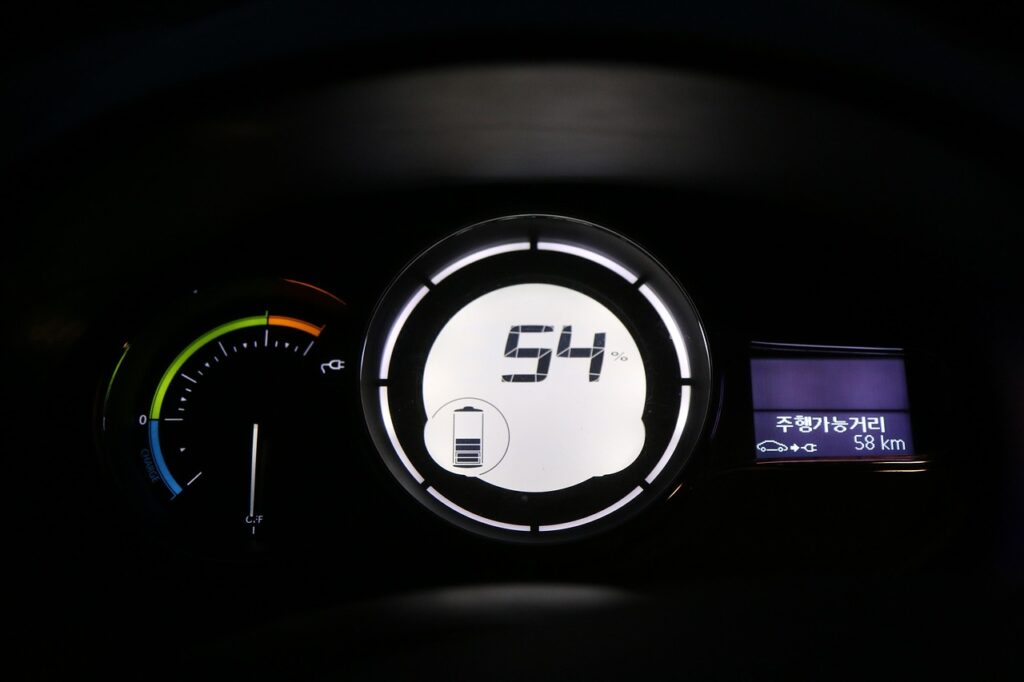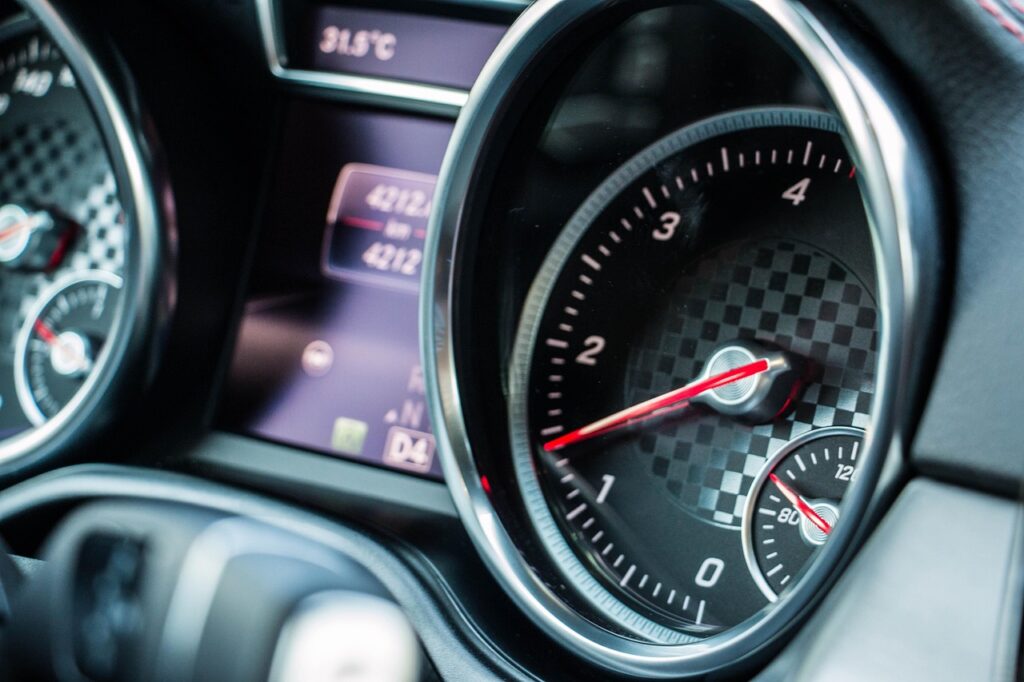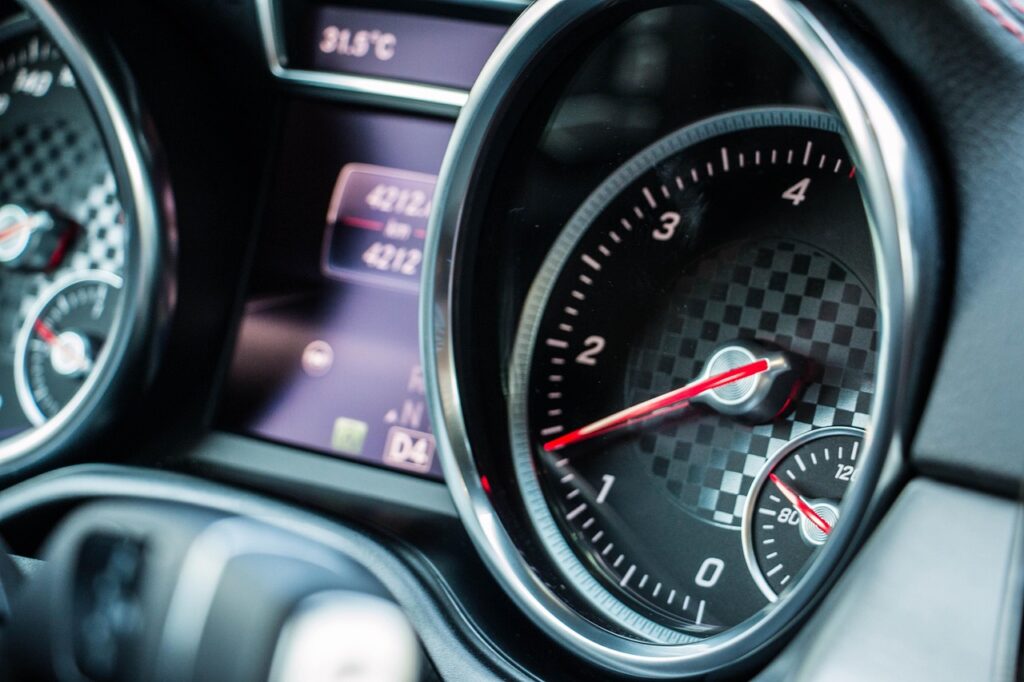Picture this: you’re driving, and suddenly a mysterious symbol lights up your dashboard. While seasoned drivers might quickly decipher its meaning, a significant portion of motorists, particularly younger generations, are often left perplexed. A striking Goodyear Auto Service and Just Tires survey revealed that 88 percent of young adults recognized an emoji, yet only 51 percent could identify a vehicle warning sign, highlighting a critical gap in automotive knowledge.
These aren’t just arbitrary symbols; they’re your vehicle’s direct communication, honed over decades. Dashboard indicators first appeared in the mid-1930s, introduced by Hudson Car Company. Initially scorned as “idiot lights” because they only activated *after* a fault, offering minimal warning, these early systems were limited. A pivotal change arrived in 1996: car dashboard lights were finally standardized across the industry and regulated by safety standards, establishing a uniform, reliable diagnostic language.
Today, these standardized indicators are invaluable tools for maintenance and safety, designed to warn you of potential issues before they become costly failures. Understanding their meanings empowers proactive action, ensuring your car runs efficiently and safely. Though colors and positions may vary, the universal language of red (urgent), amber (caution), and green/blue (informational) consistently guides you on whether to stop immediately, seek service promptly, or simply acknowledge an active feature.

1. **Check Engine (Malfunction Indicator Light)**
The ubiquitous “Check Engine” light, often an engine outline, is perhaps the most recognized amber warning on your dashboard. It signals your vehicle’s sophisticated computer has detected a problem within the engine or its auxiliary systems. This can range from minor issues to significant mechanical faults, serving as your car’s way of indicating something isn’t quite right.
The implications of a lit Check Engine light are vast, covering a spectrum of underlying issues. Common culprits cited include a faulty oxygen sensor, a loose or damaged gas cap, a bad catalytic converter, a mass airflow sensor needing replacement, or worn spark plugs or plug wires. Each component is crucial for engine performance, fuel efficiency, and emissions control, making this light a broad but vital alert.
Crucially, while an amber Check Engine light usually doesn’t demand an immediate stop, a flashing light is far more serious. A blinking indicator signifies a severe problem, often a misfire, capable of causing catastrophic damage to your catalytic converter. In such cases, immediate action is paramount to prevent further, more costly complications to critical exhaust system components.
Driving with the Check Engine light on for extended periods, even if not flashing, is generally ill-advised without knowing the root cause. Your vehicle’s computer diligently records problems, allowing mechanics to retrieve diagnostic trouble codes. Addressing these issues proactively, even if they seem minor, prevents them from escalating into major breakdowns, thus contributing to lower long-term maintenance costs and extending your car’s lifespan.
2. **Coolant Temp Warning**
The Coolant Temp Warning, depicted by a thermometer in liquid, is a critical red indicator demanding immediate and undivided attention. This light signals your engine’s temperature has exceeded normal operating limits, indicating severe overheating. The coolant system is paramount for maintaining optimal engine temperature, and its failure can cause extensive heat damage.
If this red warning appears, act swiftly. The context advises immediately turning your heater on full blast to draw heat from the engine. More importantly, stop the vehicle as soon as safely possible. Continued driving with an overheating engine risks catastrophic damage, including warped cylinder heads, blown head gaskets, or engine seizure, turning a minor repair into a complete engine replacement.
Once safely stopped, allow the engine to cool before attempting diagnosis. Common triggers include low coolant levels, a malfunctioning cooling fan, a faulty radiator cap, or leaks within the system. Regular coolant level checks and hose inspections are preventative measures often averting this urgent warning.
This warning is tied to the coolant temperature gauge, one of your car’s most important. If the gauge rises above the middle or enters the red zone, especially with the warning light, the engine is actively overheating. Letting this persist, particularly with low or no coolant, will cause major damage to the engine, its valves, pistons, and crankshaft.
The Coolant Temp Warning is not a suggestion but an imperative, signaling immediate risk to your engine’s structural integrity. Promptly addressing it by stopping and seeking professional assistance is essential to safeguard your vehicle’s most expensive component and avoid devastating repair bills.
Read more about: Post-Warranty Peril: 5 Vehicles That Fail Right After Coverage, And 5 That Go The Distance

3. **Oil Pressure Warning / Low Oil Level**
Few dashboard lights signal such urgency and potential damage as the Oil Pressure Warning, typically an oil can symbol. This red indicator is one of the most serious warnings, signifying critical loss of oil pressure or dangerously low oil levels. When it illuminates, your engine’s lubrication system is compromised, directly threatening its mechanical integrity.
Engine oil lubricates moving parts, reduces friction, cleans components, and helps cool the engine. Loss of oil pressure means these vital functions are failing, leading to metal-on-metal contact. This friction rapidly generates extreme heat and wear, with damage risk increasing exponentially every second and yard the vehicle operates under these conditions.
The context states, “If you see this light, stop as soon as possible to prevent damage to the engine,” emphasizing immediate cessation of operation. Preferably, stop the vehicle immediately and safely. Continuing to drive, even briefly, can cause severe internal engine damage like seized bearings, damaged pistons, or a ruined crankshaft, necessitating costly rebuilds or replacements.
While the red oil light demands immediate shutdown, some vehicles feature an amber “Oil Level Warning.” This earlier indicator suggests low or excessive oil. Even in amber, it should not be ignored, as consistently low oil can lead to pressure issues and premature engine wear. Regular oil changes, every 3,000 to 5,000 miles, are crucial for efficient engine operation and preventing these warnings.
The Oil Pressure Warning is a dire warning of impending mechanical failure, not merely a service suggestion. Your prompt reaction to this red light is critical for preventing devastating engine damage. Consistent oil levels and timely oil changes are fundamental pillars of responsible maintenance, contributing significantly to powertrain longevity and reliability.
Read more about: America’s Iconic Sports Car: Decoding the Most Problematic Corvette Models in History to Help You Buy Smart
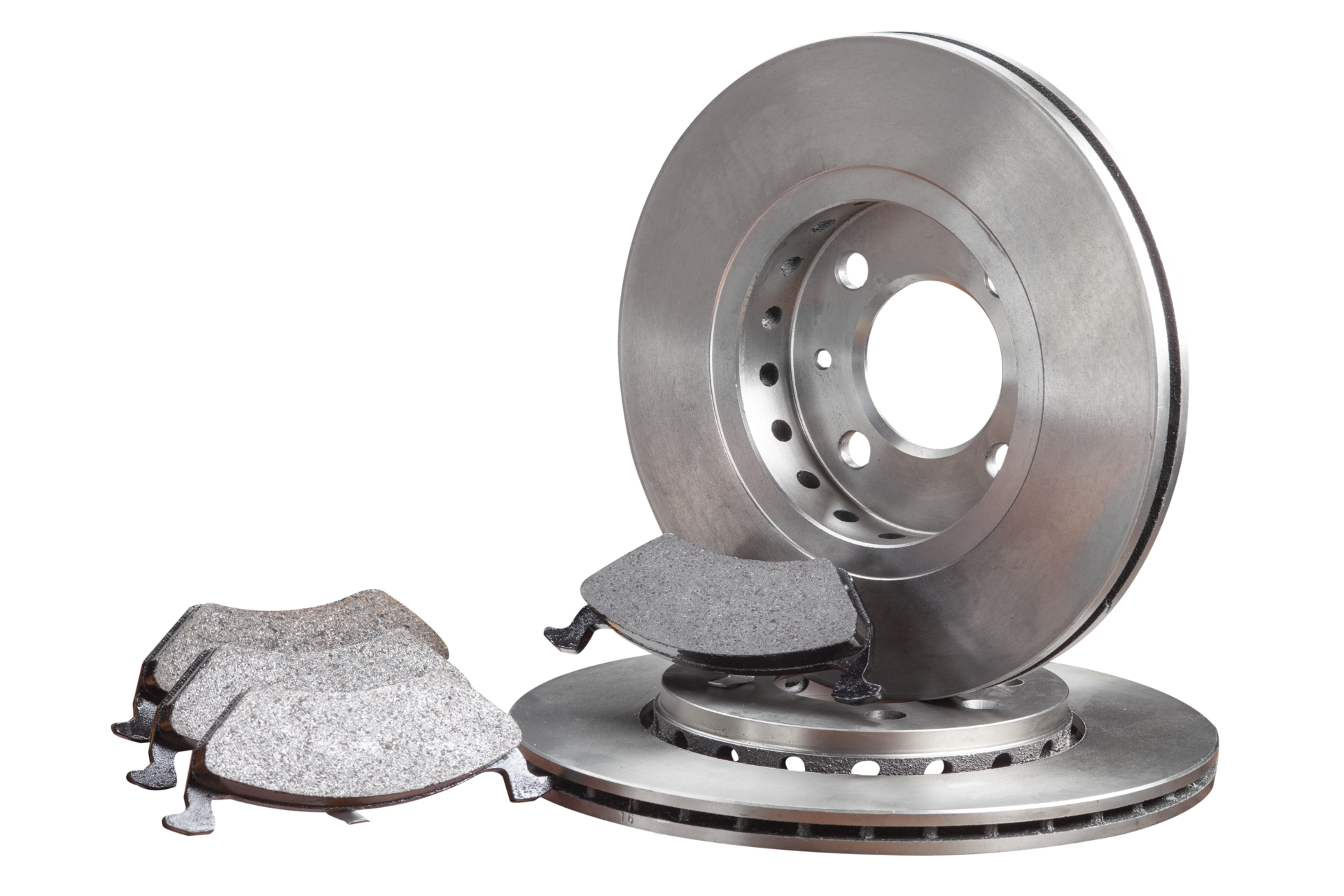
4. **Brake System Warning**
The Brake System Warning light, often a circle with an exclamation point or the word “BRAKE,” is a multifaceted red or yellow indicator for your vehicle’s critical safety system. This light can signify several issues, all directly impacting your ability to slow down or stop, demanding serious consideration due to its direct link to safety.
One common reason is simply the parking brake being engaged. While not a mechanical fault, it serves as an essential reminder to disengage it before driving, preventing unnecessary component wear. A “P” or “!” within the brake system icon often specifically indicates this.
Beyond the parking brake, the warning can indicate critically low brake fluid. Brakes rely on a sealed hydraulic system; if fluid levels drop too low, hydraulic pressure for actuation is compromised, potentially causing brake failure. This is an extreme safety hazard requiring immediate inspection for fluid leaks around wheels and within brake lines.
Furthermore, this warning can point to a general braking system issue or ABS problems. A distinct “Worn Brake Pads” symbol (circle with short lines on each side) signals worn pads needing replacement, as insufficient braking power compromises safety. Ignoring any brake warning is a gamble with potentially catastrophic consequences.
Therefore, whether a simple parking brake reminder or a severe hydraulic failure alert, any illumination of the Brake System Warning light warrants immediate attention. Inspect components, check fluid levels, and if necessary, seek professional diagnosis without delay. Proactive brake system maintenance is non-negotiable for safe operation, ensuring reliable stopping power.
Read more about: America’s Iconic Sports Car: Decoding the Most Problematic Corvette Models in History to Help You Buy Smart
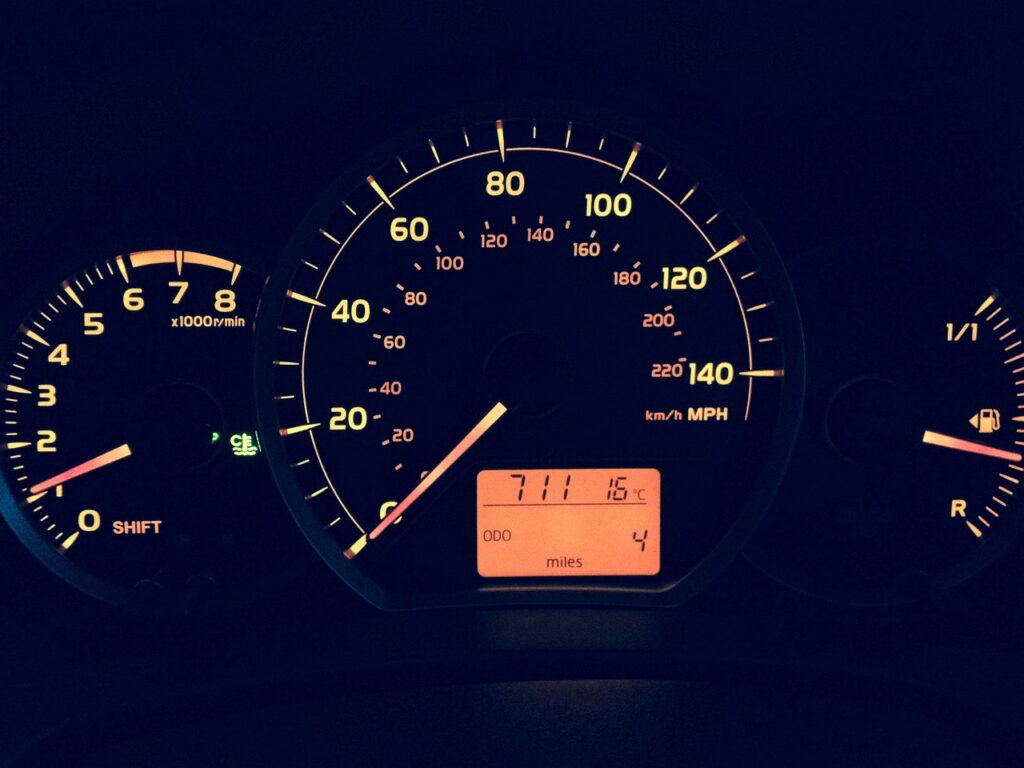
5. **ABS Light**
The Anti-lock Braking System (ABS) Light, typically “ABS” within a circle, is an amber warning for a specific issue within this advanced safety system. While distinct from the general Brake System Warning, it relates intimately to stopping capabilities, especially in challenging conditions. ABS prevents wheel lock-up during hard braking, maintaining steering control and avoiding skidding.
When the ABS light illuminates, it indicates the anti-lock brake computer has detected a fault or set a code, requiring professional diagnosis. Crucially, the anti-lock brake feature may be disabled. This doesn’t mean conventional brakes fail, but in an emergency stop, wheels could lock up, and you might lose steering control while braking, significantly increasing accident risk.
The absence of ABS, especially during sudden stops on slippery surfaces, drastically alters vehicle handling. Without ABS, drivers must revert to older techniques like “cadence braking.” Modern drivers, used to ABS, might be caught off guard by the altered behavior, making the warning vital.
ABS light triggers vary, from faulty wheel speed sensors to issues within the ABS pump or control module. While primary braking may function, critical anti-skid capabilities are compromised. Thus, despite being amber, this warning shouldn’t be taken lightly.
If your ABS light comes on, professional inspection by a qualified mechanic is highly recommended. Diagnosing ABS issues often requires specialized equipment. Addressing this promptly ensures your vehicle’s full suite of safety features is operational, providing maximum control and confidence in emergencies.
Read more about: Beyond Self-Parking: Unveiling 12 Transformative Futuristic Car Features That Will Revolutionize City Driving

6. **Battery/Charging Alert**
The Battery/Charging Alert, commonly a battery symbol, is a critical red warning for a problem in your vehicle’s electrical charging system. When it illuminates, it signals the battery isn’t charging while the engine runs, or voltage is below normal. This affects every electrical component, from headlights to infotainment.
Often, a malfunctioning alternator is at the heart of this warning. The alternator generates electrical power for car systems and recharges the battery. If it fails or its belt (alternator or serpentine) breaks, the battery quickly depletes, potentially leaving you stranded as systems fail. This progressive problem leads to complete vehicle shutdown.
The context advises several checks: “check battery terminals, alternator belt and battery condition.” Loose or corroded terminals impede electricity. A worn or broken belt means the alternator isn’t driven. A dying battery may struggle to hold a charge even with a functioning alternator, indicating replacement is due.
Ignoring this alert means gambling with operational continuity. As the battery drains, you might notice dimming headlights, a struggling radio, or erratic electrical behavior before the engine dies. Unlike other warnings, this light signals imminent operational failure that can leave you stranded in an inconvenient or dangerous location.
When this red light appears, address it immediately. While you have limited time before total depletion, depending on remaining charge and electrical load, head directly to a service center or pull over safely to avoid being stranded. Proactive inspection of your battery and alternator are key to avoiding this particularly inconvenient predicament.

7. **Transmission Temperature / Problem**
The Transmission Temperature or Problem warning light, often a gear icon, sometimes with a thermometer or exclamation point, is a serious indicator demanding prompt attention. It signals your transmission is operating at higher temperatures, its fluid is excessively hot, or a general system problem. As a complex and expensive component, ignoring this warning risks catastrophic damage.
An automatic transmission relies heavily on its fluid for lubrication, cooling, and hydraulic pressure. When fluid overheats, its lubricating properties degrade rapidly, causing increased friction, accelerated wear, and potential breakdown. The context explicitly states, “When the A/T oil temp light turns on, it means the transmission is about to overheat. Park the vehicle and let it cool, then drive or tow it to a mechanic.” This highlights the issue’s severity.
Transmission problems are almost always serious. Overheating, low fluid, or abnormal sensor readings can quickly lead to irreversible internal damage. Continued driving under such conditions can weld components, burn clutch packs, or necessitate a complete transmission rebuild or replacement—among the most expensive repairs.
This warning might also be accompanied by performance changes, like delayed or harsh shifting, a burning smell, or power loss. Modern vehicles often use “Reduced Power Warning” systems to limit engine output for serious issues like transmission faults, further emphasizing urgency.
In the event of this light, pull over safely and allow the transmission to cool. If the light persists or operation is impaired, drive cautiously to a mechanic or, preferably, tow the vehicle. Regular transmission fluid checks and services are vital for preventing these critical warnings and ensuring smooth, reliable operation of this essential powertrain component.
Continuing our journey through the essential language of your car’s dashboard, we delve into another critical set of indicators designed to keep you informed and safe on the road. Understanding these signals is not just about avoiding inconvenient breakdowns; it’s about mastering your vehicle’s health and anticipating potential issues before they become dire, safeguarding both your investment and your safety.
These next seven lights represent a diverse range of functions, from crucial safety systems to critical maintenance alerts, each demanding its own level of attention and action. Familiarizing yourself with these symbols empowers you to respond effectively, ensuring your vehicle remains a reliable and high-performing machine.
Read more about: The Hidden Costs: Unmasking the Real Reasons Your Electric Bill Exploded After Bringing Home an EV

8. **Tire Pressure Monitoring System (TPMS) Light**
The Tire Pressure Monitoring System (TPMS) light, often depicted as a horseshoe-shaped symbol with an exclamation point, is an amber warning that directly impacts your vehicle’s handling, fuel efficiency, and overall safety. This sophisticated system constantly monitors the air pressure within your tires, alerting you when a tire’s pressure drops below a safe threshold or, in some cases, becomes overinflated. Maintaining proper tire pressure is fundamental to vehicle dynamics and longevity.
A lit TPMS light signals that one or more of your tires are experiencing low pressure. This isn’t merely a suggestion; under-inflated tires can lead to several serious issues, including increased rolling resistance, which negatively affects fuel economy. More critically, they can cause excessive heat buildup, increasing the risk of a blowout, and significantly compromise steering response and braking distance, especially during emergency maneuvers.
Beyond simply low pressure, the TPMS light can also indicate a sensor malfunction. If the light blinks upon startup and then stays on, it often suggests an issue with the TPMS sensor itself, rather than just low tire pressure. This might mean a faulty sensor needs to be replaced, or that the system needs to be reset, which in some vehicles may require professional service, while others allow for a manual reset by the operator.
Regularly checking your tire pressure with a gauge, even with TPMS, remains a prudent practice. Cold weather, in particular, causes air pressure in tires to drop, making monthly checks especially important. Addressing a TPMS warning promptly by checking and adjusting tire pressures or seeking sensor diagnosis helps maintain optimal vehicle performance, prolong tire life, and, most importantly, ensure secure road contact for every drive.
Read more about: Navigating the Automotive Minefield: Essential Car Accessories That Actually Save Lives (and the Gimmicks to Avoid)
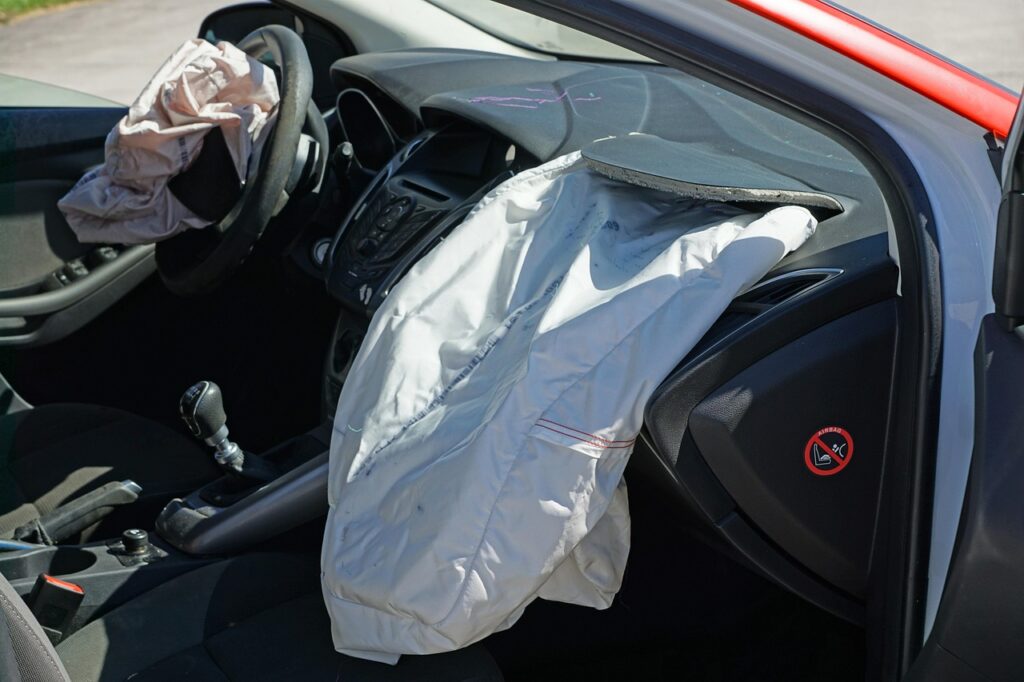
9. **Airbag Fault**
The Airbag Fault warning, typically an amber or red symbol showing a passenger in a seat with an airbag deployed or the letters “SRS” (Supplemental Restraint System) or “AIR BAG,” is one of the most serious safety alerts you can receive. This light indicates a problem within your vehicle’s complex airbag system, signaling that one or more airbags may not deploy in the event of an accident. When it stays illuminated after starting the vehicle, it demands immediate attention.
Modern vehicles are equipped with multiple airbags designed to protect occupants from various angles during a collision. A fault in this system means a critical layer of passive safety is compromised. This could be due to a faulty sensor, a wiring issue, a problem with the airbag control module, or even an issue with the seatbelt pretensioners, which are often integrated into the SRS. Any of these could prevent the airbags from functioning as intended when you need them most.
An airbag warning light is not a minor inconvenience; it’s a direct threat to occupant safety. Driving with this light on means gambling with your well-being in the unfortunate event of a crash. Unlike other amber warnings that might allow for continued, cautious driving, an airbag fault directly impacts life-saving equipment, potentially leaving you unprotected.
If this light illuminates and remains on, professional diagnosis is imperative. Specialized diagnostic equipment is often required to identify the precise nature of the fault within the complex SRS. Do not attempt to fix airbag system issues yourself, as improper handling can inadvertently deploy an airbag or fail to resolve the underlying safety concern. Promptly addressing this warning is crucial for ensuring the full functionality of your vehicle’s occupant protection systems.
Read more about: America’s Iconic Sports Car: Decoding the Most Problematic Corvette Models in History to Help You Buy Smart

10. **Power Steering Warning Light**
The Power Steering Warning Light, often depicted as a steering wheel icon, sometimes accompanied by an exclamation point, is a critical red or amber indicator that warns of an issue with your vehicle’s power steering system. This system is vital for assisting the driver in steering the wheels, making it easier to maneuver the vehicle, particularly at low speeds. A fault can drastically increase the effort required to turn the steering wheel, impacting control and safety.
In many modern vehicles, especially those with electric power steering (EPS), this light might indicate a problem with the electric motor, sensors, or the control module. For hydraulic power steering systems, the warning commonly points to low power steering fluid levels or a leak within the system. Low fluid reduces the hydraulic pressure needed for assistance, making the steering feel heavy and unresponsive.
The implications of a malfunctioning power steering system are immediate and significant. If the power steering completely fails, you will still be able to steer the vehicle, but it will require considerably more physical effort, especially when parking or turning at slow speeds. This sudden change in steering feel can be alarming and potentially dangerous, particularly if it occurs unexpectedly while driving. A loss of power steering can compromise your ability to react quickly and precisely, increasing the risk of an accident.
Should this warning light appear, it is advisable to have the system inspected by a qualified mechanic without delay. For hydraulic systems, checking the power steering fluid level is a good first step, but leaks or pump issues require professional attention. Ignoring this warning can lead to increased driver fatigue, reduced vehicle control, and potentially more extensive and costly repairs to the steering components if the underlying issue is left unaddressed.
Read more about: America’s Iconic Sports Car: Decoding the Most Problematic Corvette Models in History to Help You Buy Smart
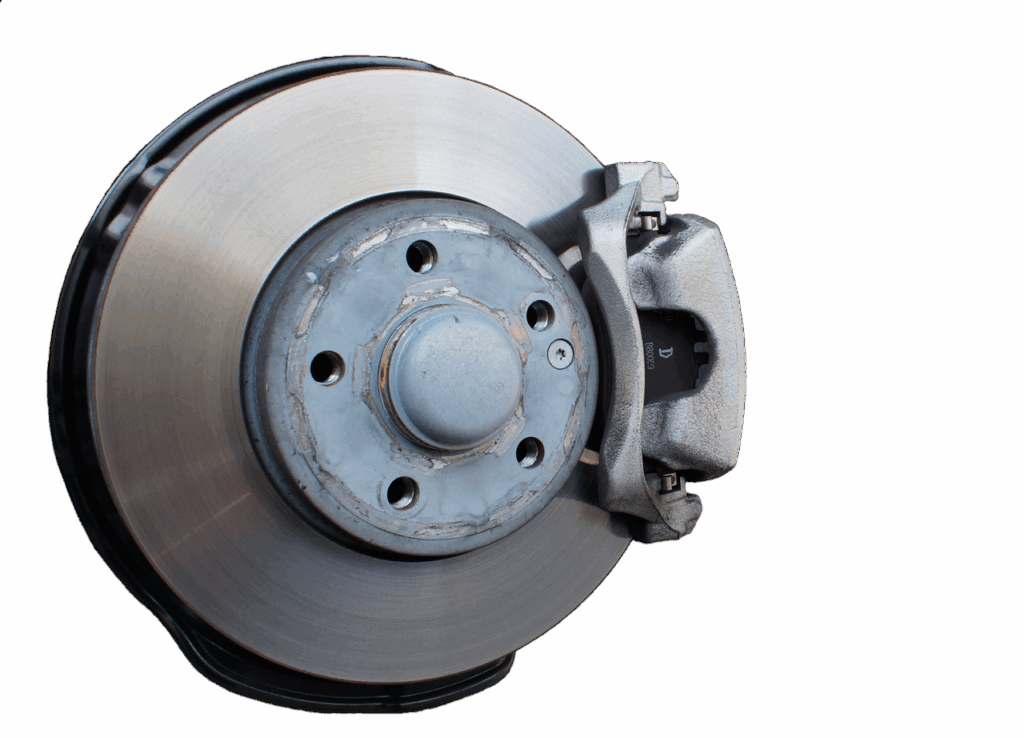
11. **Brake Pad Warning**
Distinct from the general Brake System Warning, the Brake Pad Warning light, often represented by a circle with short, dashed lines on either side, is an amber indicator specifically signaling that your vehicle’s brake pads are critically worn. Brake pads are essential friction components that clamp down on the brake rotors to slow or stop your vehicle. Their condition is directly linked to your stopping power and overall braking performance.
As you drive, brake pads naturally wear down over time and with use. This warning light illuminates when the pad material has reached a minimum safe thickness, often triggered by an integrated wear sensor. Ignoring this alert means you are operating with insufficient braking material, which will severely diminish your vehicle’s ability to stop effectively and safely, increasing stopping distances and reducing braking responsiveness.
Beyond compromised safety, driving with worn brake pads can lead to more extensive and expensive damage. Once the friction material is completely gone, the metal backing plate of the pad will grind directly against the brake rotor. This not only produces an unpleasant, high-pitched squealing or grinding noise but can also severely score and damage the rotors, necessitating their replacement in addition to the pads.
Therefore, when the Brake Pad Warning light appears, it’s a clear signal to schedule a brake inspection and replacement of the pads promptly. This isn’t a problem that will fix itself or one that can be safely postponed indefinitely. Proactive replacement of worn brake pads is a fundamental aspect of vehicle maintenance, ensuring reliable stopping power and preventing more costly repairs to other brake system components.
Read more about: Unmasking the Silent Destroyers: 14 Everyday Driving Habits Secretly Wrecking Your Ride
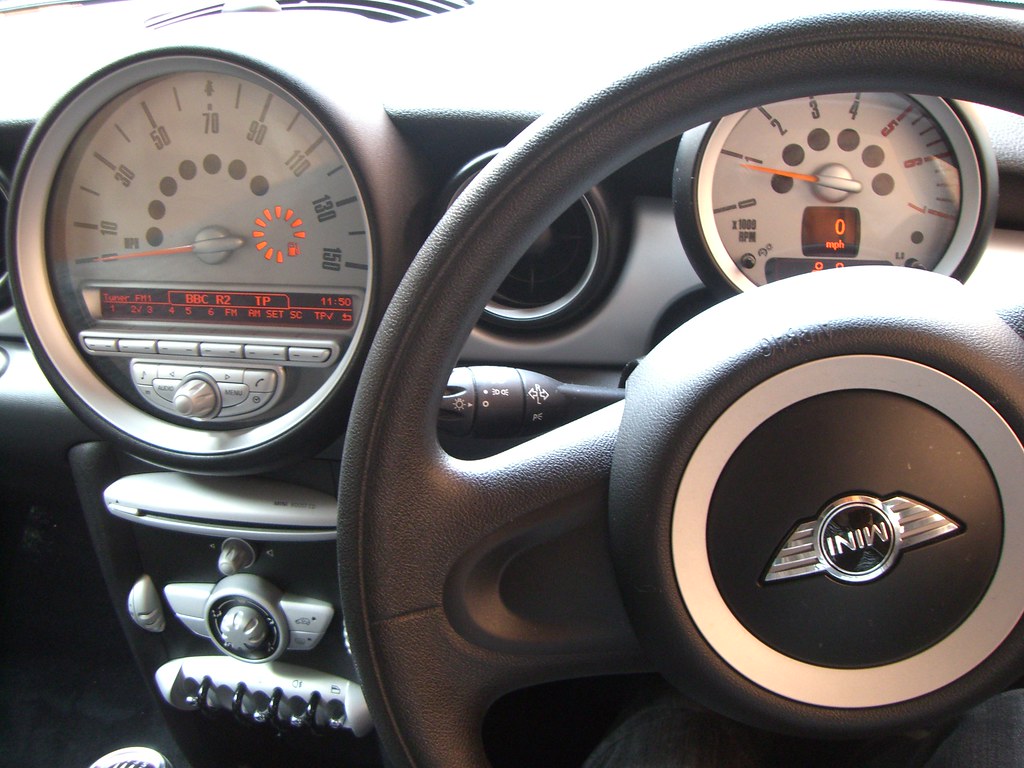
12. **Catalytic Converter Warning**
The Catalytic Converter Warning, which may sometimes be a dedicated symbol or more often trigger the Check Engine light with a specific diagnostic code, indicates that this crucial emissions control device is malfunctioning or overheating. The catalytic converter is a vital component of your vehicle’s exhaust system, responsible for converting harmful pollutants in exhaust gases into less toxic substances before they are released into the atmosphere.
When the catalytic converter is not operating properly, it can lead to several performance issues and environmental concerns. A common problem is a clogged catalytic converter, which prevents exhaust gases from exiting the engine efficiently. This creates back pressure in the exhaust manifold, causing a significant loss of engine power, reduced fuel economy, and potentially poor engine performance, including hesitation or stalling.
An overheating catalytic converter is another serious concern, often indicated by an unusual burning smell from under the vehicle. This can be caused by unburnt fuel entering the converter due to engine misfires or other fuel system issues. Extreme heat can damage the converter internally, rendering it ineffective, and in rare cases, even pose a fire risk to the underside of the vehicle.
If you suspect an issue with your catalytic converter, or if the Check Engine light points to a related diagnostic trouble code, prompt attention is necessary. Replacing a catalytic converter can be one of the more expensive exhaust system repairs, making proper engine maintenance, such as addressing misfires or oxygen sensor issues, crucial for its longevity. Ignoring these warnings not only harms the environment but can also severely impact your vehicle’s performance and lead to substantial repair costs.
Read more about: High-Mileage Havoc: The Crippling Electrical & Mechanical Nightmares Haunting Your Sports Car – A Deep Dive into the Ford S197 Mustang
13. **Reduced Power Warning**
The Reduced Power Warning, often represented by an engine icon with an arrow pointing down or a specific text message, is an amber indicator that signals your vehicle’s computer has actively limited engine power output. This is a deliberate safety measure implemented by modern vehicles to prevent further damage when a serious problem is detected within the engine, transmission, or other critical systems. It’s your car’s way of telling you, “Something is seriously wrong, and I’m protecting myself.”
When this light appears, you will immediately notice a significant decrease in engine performance. The vehicle may accelerate slowly, struggle to maintain speed, or have a reduced top speed. This “limp mode” or “fail-safe mode” is designed to allow you to drive the vehicle cautiously to a service center or a safe location, rather than risk complete breakdown or catastrophic component failure.
The underlying causes for a Reduced Power Warning can be diverse and serious. It could be triggered by severe engine trouble, such as a major misfire or turbocharger issue, significant transmission faults, a bad battery affecting crucial electronic components, or even sophisticated sensor malfunctions that feed incorrect data to the engine control unit. The vehicle’s computer detects parameters outside safe operating ranges and intervenes to prevent irreparable harm.
Upon seeing this warning, it is crucial to avoid aggressive driving and reduce speed. If possible, pull over safely and turn the engine off for a few minutes to see if the system resets; however, if the warning persists, professional diagnosis is absolutely necessary. Driving for extended periods in reduced power mode is not advisable, as the root cause, if left unaddressed, could lead to more severe and costly repairs to powertrain components.
Read more about: America’s Iconic Sports Car: Decoding the Most Problematic Corvette Models in History to Help You Buy Smart
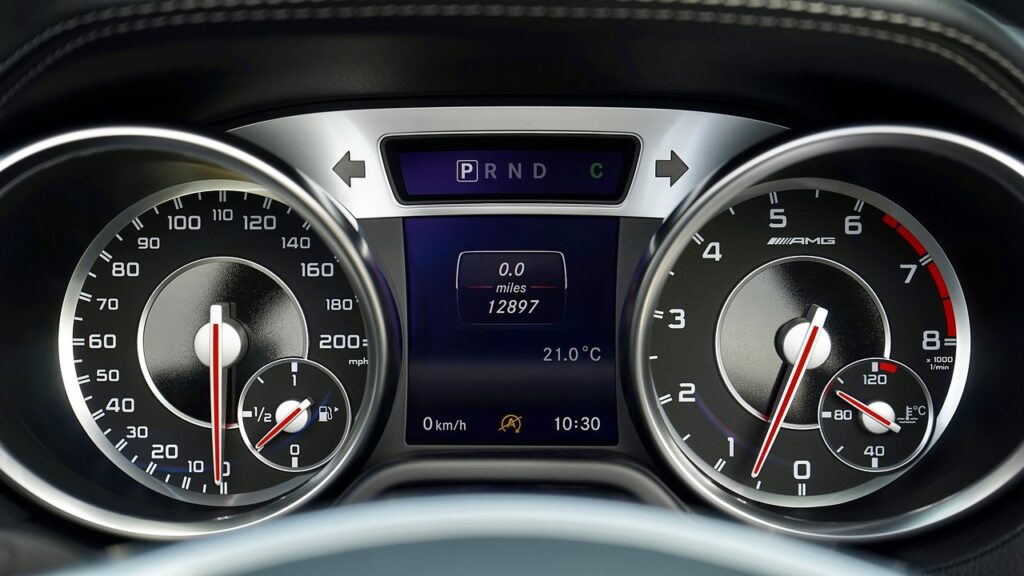
14. **DPF Light (Diesel Particulate Filter)**
For drivers of diesel vehicles, the DPF Light, typically a symbol depicting a rectangular filter with exhaust dots exiting it, is an amber warning that is highly significant for both emissions control and engine health. The Diesel Particulate Filter (DPF) is designed to capture soot and ash from the exhaust gases, preventing harmful particulates from being released into the atmosphere. This light signals a problem with this critical filter system.
The most common reason for the DPF light to illuminate is that the filter is becoming clogged with soot. Modern diesel engines employ a process called “regeneration” to burn off this accumulated soot, typically by raising the exhaust temperature during longer drives at higher speeds. If your driving habits primarily involve short trips or stop-and-go traffic, the DPF may not get sufficient opportunity to regenerate, leading to excessive soot buildup.
When the DPF light first appears, it often means the filter is partially clogged and requires a regeneration cycle. The context indicates that if the DPF light comes on, it suggests the diesel exhaust particulate filter failed a test and needs service. Many vehicle manuals advise driving at a consistent speed (e.g., 40-60 mph) for a period (e.g., 15-20 minutes) to allow for an active regeneration to occur. Ignoring this initial warning can lead to the filter becoming severely clogged, potentially requiring a forced regeneration at a dealership or even an expensive DPF replacement.
A completely clogged DPF can lead to reduced engine power, increased fuel consumption, and in severe cases, cause the vehicle to enter a limp mode to prevent engine damage. It can also be indicative of other underlying engine issues that contribute to excessive soot production. Therefore, addressing the DPF light promptly by attempting a regeneration or seeking professional service is essential for maintaining your diesel vehicle’s emissions compliance, engine performance, and avoiding costly repairs.
Mastering the language of your dashboard is more than just a party trick; it’s a fundamental aspect of modern vehicle ownership. Each light, whether red for urgent peril or amber for cautious concern, serves as a direct communication from your car’s intricate systems, offering invaluable insights into its health. By understanding these symbols, you’re not just reacting to problems; you’re proactively maintaining your vehicle, extending its life, enhancing its performance, and, most importantly, ensuring every journey is as safe and reliable as it can possibly be. Equip yourself with this knowledge, and you’ll navigate the roads with confidence, empowered to keep your automotive companion running smoothly for years to come.

